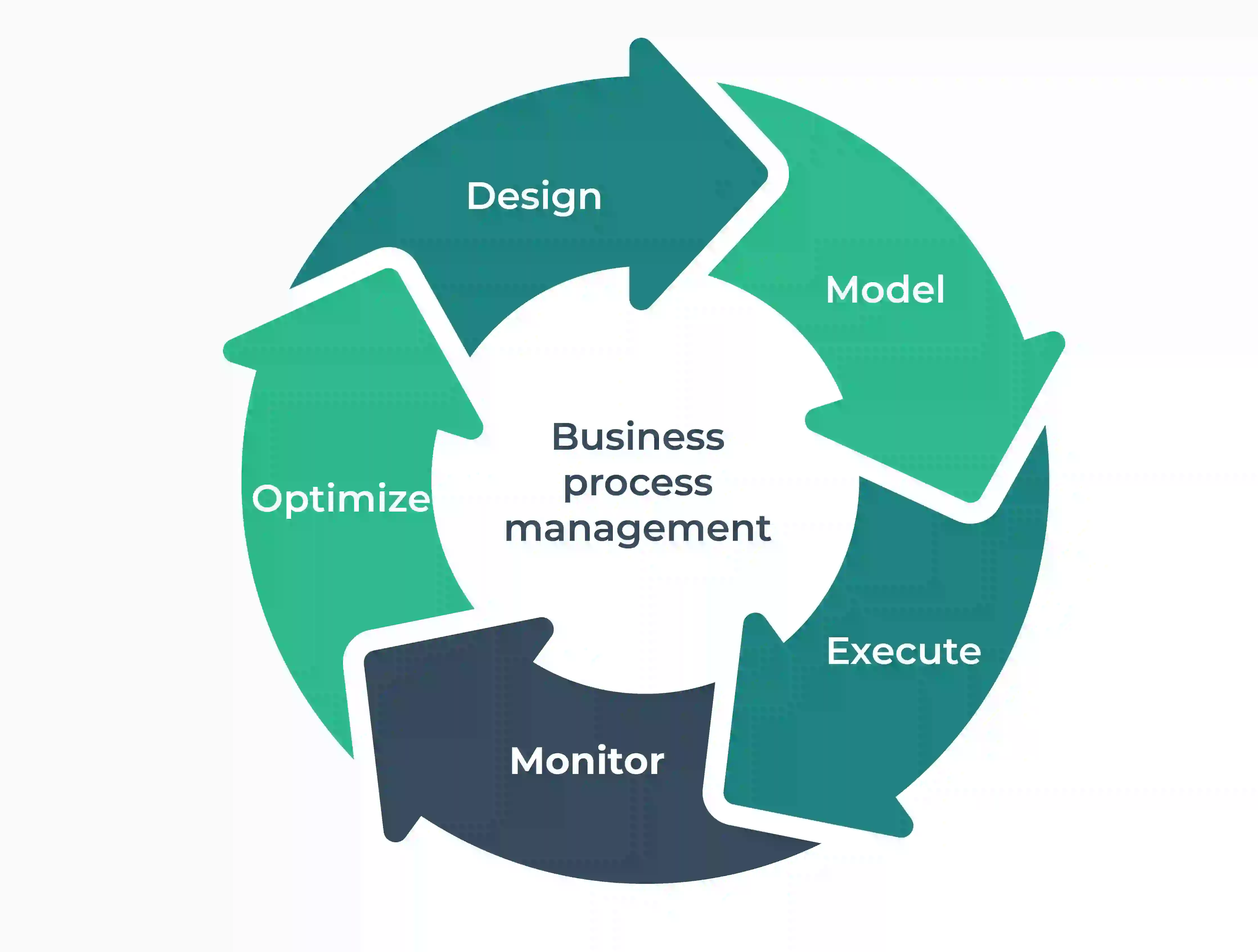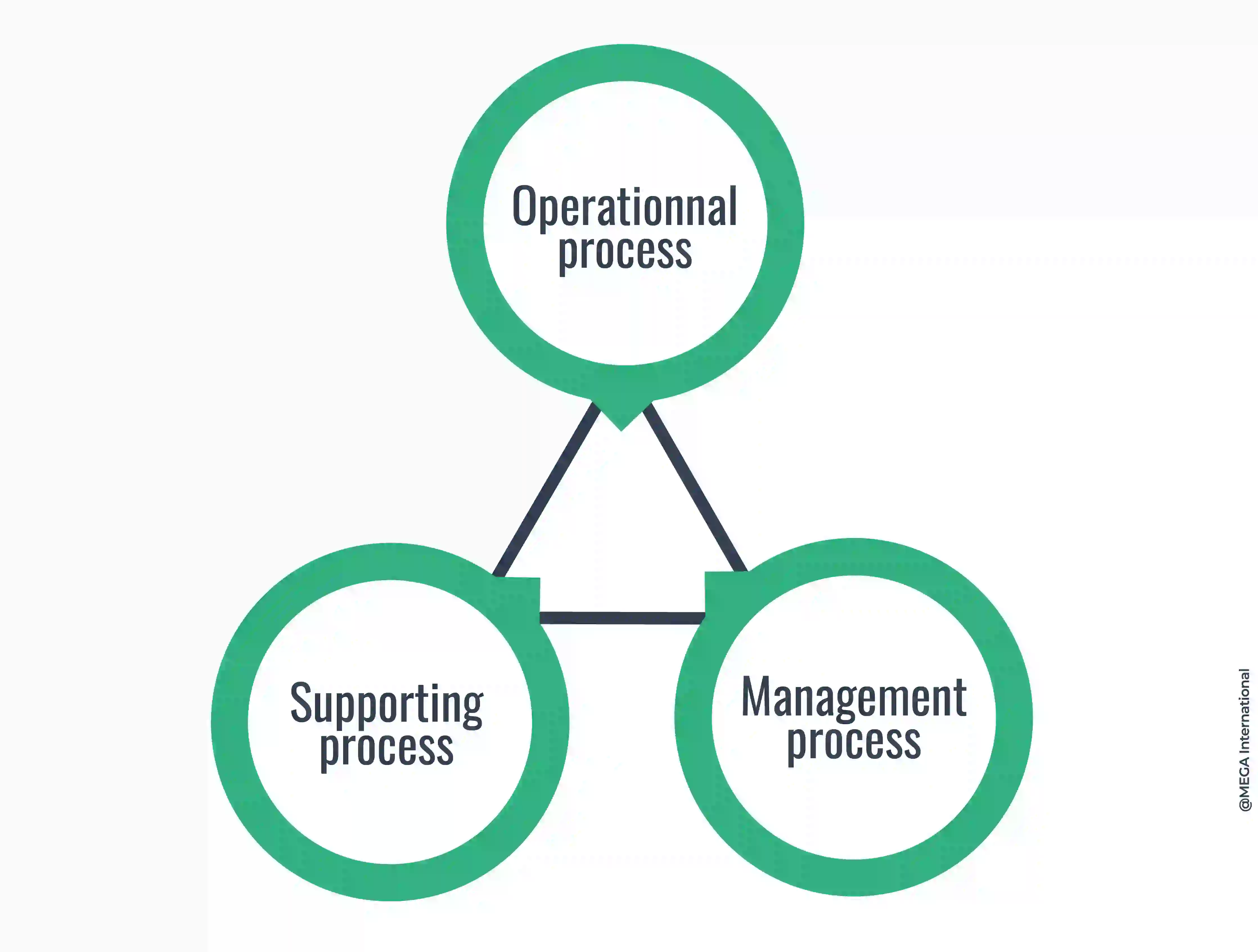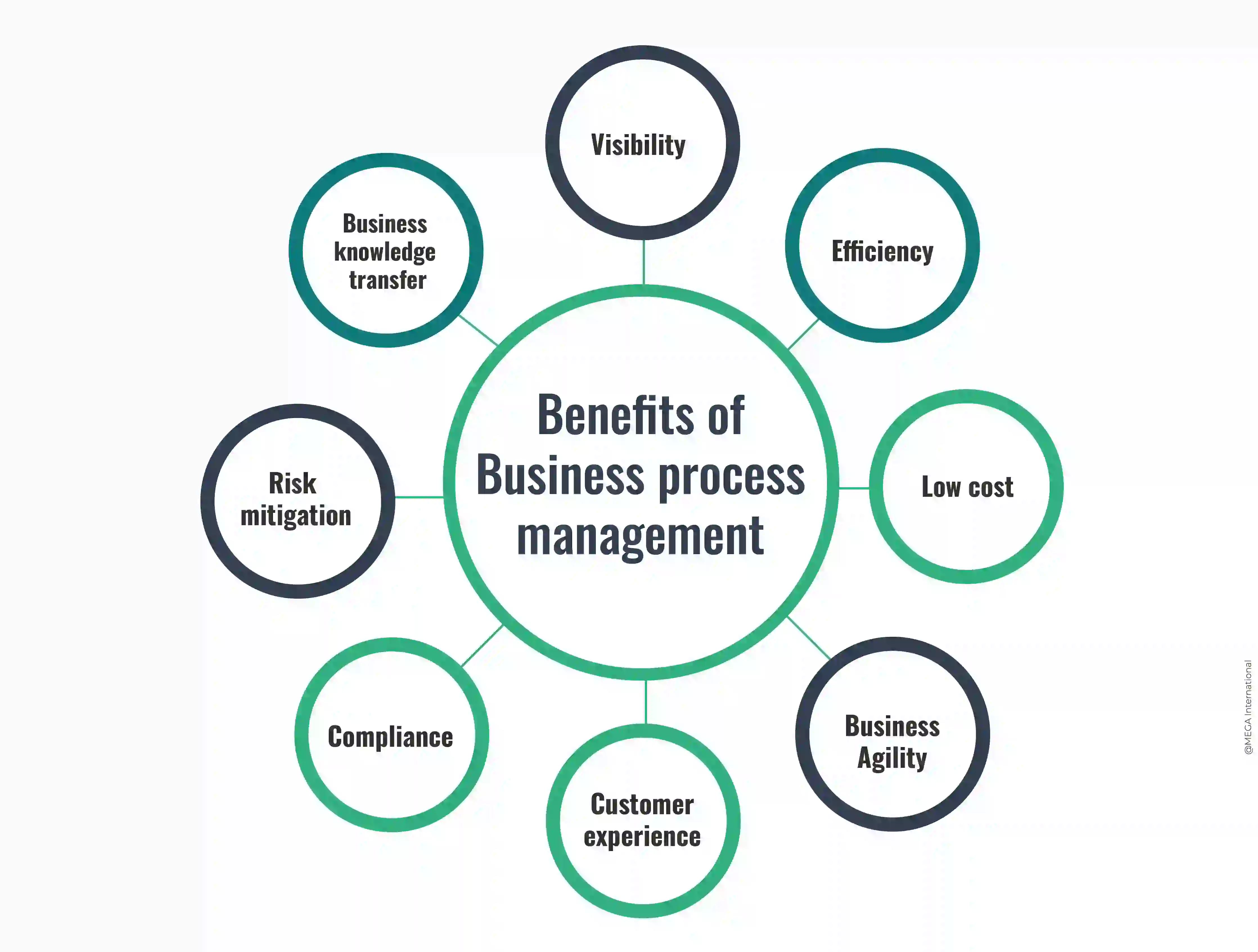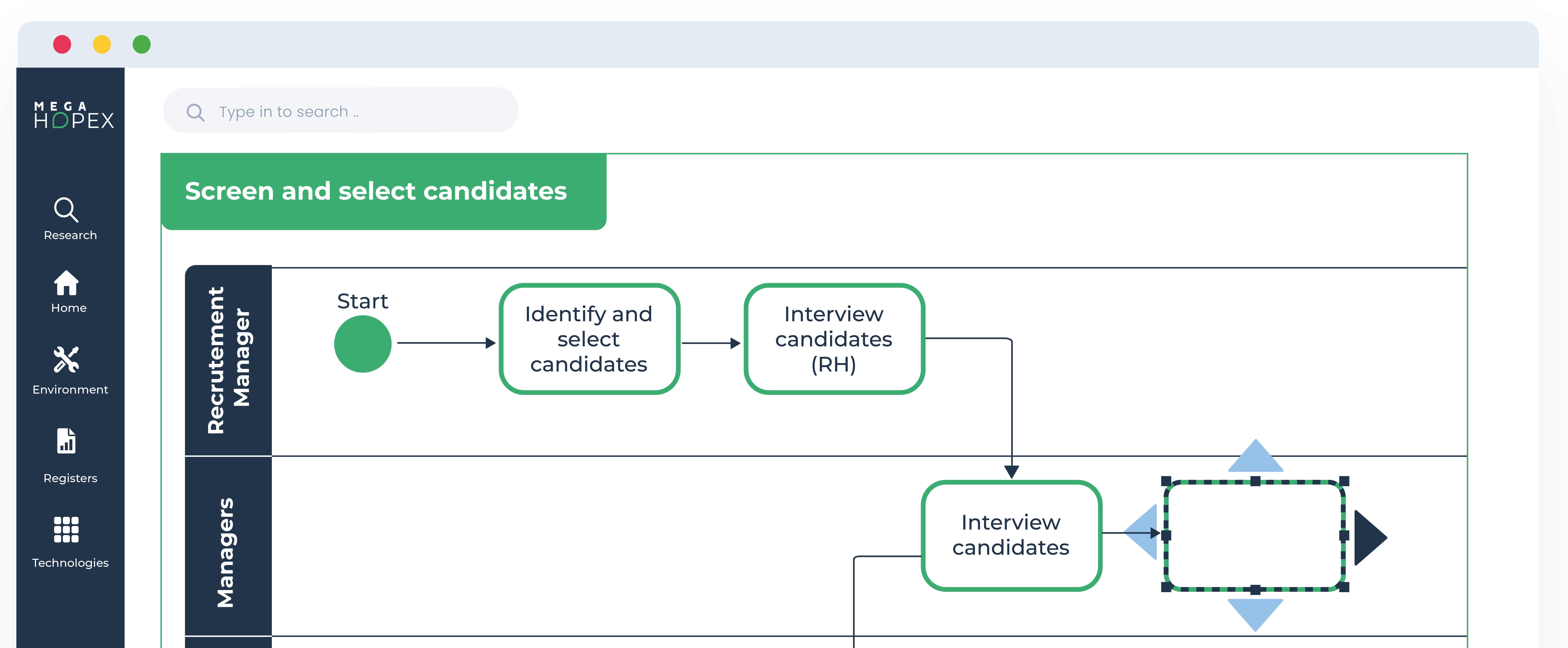
Business Process Management: What It Is & Why It Matters
Business Process Management is critical for understanding how your company delivers products or services. It is a great way to identify possible improvements or detect compliance issues. Regardless of your business size, BPM helps improve your business efficiency. This guide will help you understand BPM, why it matters, and how it can be successfully adopted in your company.
What is the definition of Business Process Management?
Business Process Management (BPM) enhances an organization's business processes effectiveness, efficiency, and agility. It involves using tools and techniques to analyze, design, implement, monitor, control, and optimize business processes. BPM focuses on improving organizational performance by automating manual tasks and streamlining operations through automation. It also enables organizations to identify areas where improvements can be made to improve overall efficiency. BPM helps organizations identify areas to cut costs and make their processes more efficient. Through this process, businesses can increase productivity while reducing costs. 
BPM project system focuses on the entire process rather than the individual tasks to improve performance. It covers a series of steps such as:
- Business process discovery to identify how the process currently existing in your organization performs.
- Business process modeling to define how you believe your process should be.
- Business process simulation to test multiple process optimization scenarios before implementing them.
- Process execution: once designed, the required steps are executed manually or automated using an application.
- Business process optimization, analyzing process performance by identifying existing or potential bottlenecks or opportunities to improve process efficiency.
Why does Business Process Management matter?
BPM software is crucial in improving companies' operational efficiency and continuously supporting business transformation. It helps eliminate inefficient processes that cost you time and money by identifying bottlenecks and complexities and aligning your operations with customers' needs. With business process automation, organizations improve their efficiency by reducing manual bottlenecks.
Types of business process management
There are many different ways to go about BPM, and understanding the various types can be vital to ensuring success. With a better understanding of BPM, businesses can more effectively optimize their processes and improve their overall efficiency. Let's explore the different types of Business Process Management and discuss their advantages.

BPM Types include:
- Operational BPM - Focuses on improving the efficiency and effectiveness of operational business processes. It can automate manual processes, reduce operating costs, improve customer service, and increase customer satisfaction. Operational BPM also helps organizations manage their business processes more effectively to maximize profits and minimize resources. It provides an effective way to identify problems quickly, design solutions to address them and monitor progress as improvements are implemented. By streamlining operations with Operational BPM, organizations can become more agile and responsive in meeting customer needs while controlling costs.
- Strategic BPM - is a comprehensive approach to managing, optimizing, and aligning business processes to achieve organizational goals. It helps organizations identify and eliminate inefficiencies in their processes and improve their operations' overall productivity and effectiveness. Strategic BPM also allows organizations to become more agile, quickly responding to changes in customer demands or market conditions. Additionally, it will enable organizations to measure the performance of their processes, providing insights into how they can be further improved. Strategic BPM
- Dynamic BPM is a potent tool that allows businesses to adjust their processes in real-time swiftly. By utilizing Dynamic BPM, companies can quickly identify areas of improvement and make the necessary changes without needing to stop or restart a process. Furthermore, it helps ensure all processes comply with regulations and industry standards. This allows companies to remain flexible and agile in the face of ever-changing business conditions, ensuring that operations are optimized for maximum efficiency.
- Document-driven BPM - is a type of process automation and management that utilizes documents as its primary means. By using documents, organizations can structure their processes efficiently and efficiently. This method allows for better team collaboration and easier access to critical information. Additionally, document-driven BPM enables companies to track progress more effectively, allowing them to be more proactive in any changes that may need to be made to optimize the process.
- Model-driven BPM - uses visual models to describe and analyze business processes. It is an approach to process design that uses structured, graphical elements to represent the activities, data flows, decision points, and relationships between those components within a process. Model-driven BPM enables organizations to quickly create, modify, and analyze process designs without writing code or scripts. This process design method can help organizations better understand and optimize their process landscape for improved efficiency and effectiveness.
- Case-driven BPM is a powerful tool for managing processes that involve complex and unpredictable human interactions. This approach focuses on analyzing how people interact with each other and with the process itself. Case-driven BPM aims to identify a process's core elements, such as the tasks, activities, and data associated with it. By understanding these elements, organizations can develop strategies to improve their processes and make them more efficient.
- Decision-driven BPM - is an approach to Business Process Management that focuses on automating and optimizing decision-making processes. It uses data analysis and artificial intelligence to identify opportunities for improvement, allowing businesses to make more informed decisions faster. The goal is to improve operational efficiency and reduce errors by creating an environment where decisions are made quickly and accurately based on current conditions. Decision-driven BPM also enables businesses to be more agile, responding quickly to changing market conditions or customer demands.
- Event-driven BPM - is an efficient and powerful way to automate business processes. It uses triggers to respond to specific events or changes in process-related data, such as customer orders or employee records. Instead of requiring manual intervention, these triggers can initiate automated actions that are executed promptly. This process automation can help organizations increase operational efficiency, reduce costs, and ensure that tasks are completed on time and accurately.
Related: Risk Management Process Definition
It's important to note that organizations may use a combination of these types of BPM to meet their specific needs.
Benefits of Business Process Management
BPM technologies help streamline processes and eliminate bottlenecks, improving performance and reducing costs. With the proper implementation, BPM can improve nearly every aspect of an organization's operations. By understanding the principles of using BPM, businesses can create tailored solutions that will deliver meaningful results.

Here are the top 8 benefits of BPM:
1. Visibility
BPM is a great way to determine how your operations deliver their products or services. In recent years, companies started leveraging process mining to discover how their processes were executed, identifying variances by comparing actual approaches with planned business models. This helps you see what people and systems are doing instead of what you think they're doing.
2. Efficiency
A vital part of the Business Process Management discipline requires gathering and analyzing data so you can assess how your process is performing. Process mining can be crucial in identifying inefficiencies by returning log files and highlighting reworks and bottlenecks. Using the Business Process Management System (BPMS), BPM managers and workers gain a more excellent knowledge of process performance at each process step thanks to dashboards and KPI indicators to monitor process performance.
3. Cost reductions
Cost reduction is critically significant for every organization. Reducing operational costs translates into a higher profit margin and is a key performance indicator for every Business Process Management initiative. To ensure your processes contribute to the bottom line, you need to identify the total execution and delay costs of your processes. Removing process duplicates, methods with no added value, or merging several operations into one are some ways to reduce costs based on a thorough analysis of your processes' efficiency.
4. Business agility
Modern BPM platforms help organizations become more responsive to customer demands. Adopting Business Process Management software can give organizations the speed and agility to adapt to changing market demands. When a problem is detected, a company mastering its business processes can quickly identify the source of the problem, make adjustments to the process, and update it with minimal lost time. Process simulation can help predict the effect of changes on the overall business process, ensuring the organization adopts the best possible solution.
5. Customer experience
One of BPM's critical pitfalls is focusing solely on process efficiency or cost reduction, leading to departments viewing the business from their perspective and losing sight of the derived customer experience. To avoid this risk, business stakeholders can adopt an outside-in attitude associating BPM with Customer Journey Mapping to understand how customers perceive the value delivered by each process step.
6. Compliance
Organizations are subject to an ever-increasing number of regulations and need help updating compliance requirements. They must implement a robust internal control environment to ensure their processes are efficient and secure and comply with all applicable regulations. This is why many regulations explicitly require that business processes are documented to demonstrate that the company complies with regulations. Integrating internal controls and compliance into your organization's processes helps avoid regulatory fines and reputational damages.
7. Risk mitigation
Risk is inherent within any business process and requires that it be managed within every process. Business process modeling is crucial in helping organizations understand the context of risks. By identifying risks in business processes, organizations can decide what level of risk they are ready to accept and implement the proper control framework to avoid process failures.
8. Business knowledge transfer
Business process knowledge often relies on a few individuals who understand how a process is executed. With each retirement or change of position, companies face a potential loss of expertise. Implementing a business process management solution is an excellent way to record, archive, and share company knowledge with all employees. Therefore, the business process repository must be set up to allow the company to maintain its expertise and use well-documented process maps to train and orient employees.
BPM Lifecycle:

The BPM lifecycle consists of five stages: setting goals, analyzing, designing, executing, and monitoring.
Set goals
Before starting any BPM initiative, identify the goals and the scope of the work you will begin to. Do not try to boil the ocean; limit process mapping to just enough data to show value quickly. Mapping it can soon become overwhelming, requiring interviewing multiple process experts to gather data about how things work.
Analyze
The goal is to analyze how existing processes work to see if they support the business strategy and work efficiently. Process mining is a great way to see how processes work to identify reworks, inefficiencies, and deviances compared to how process experts think the process works. This phase helps understand the root cause of process inefficiencies, highlight bottlenecks, and define how to update the process to improve operational excellence.
Design
Thanks to the data gathered during the analysis phase, the process can be redesigned to be improved. Using a process simulation engine, process designers can compare different optimization options and evaluate the impact of changes before implementing them. Process design is also an excellent communication tool. By obtaining a visual representation of a process, all stakeholders better understand their role and can more easily collaborate with other employees.
Execute
It is now time to implement the process as has been planned. This phase can only succeed with good change management. Implementing a new strategy often automates part of the process previously done manually, changing how people are used to working. Please address the people's concerns about these changes to ensure the process improvement initiative is successful.
Monitor
Once implemented, it is critical to monitor your new process to see if it is executed as planned, performs as expected, and determines if an additional redesign is required. Improvement is a continuous exercise requiring constant monitoring.
What is Business Process Management System (BPMS)
A BPM system provides a suite of functionalities enabling organizations to optimize their business processes according to market and customer demands. The main features allow users to model, design, test, execute, and monitor processes' performance to ensure optimal efficiency.
Examples of BPM key software features:
Process diagramming tool
With a simple drag-and-drop UI, this tool helps process owners quickly model processes visually appealingly.
Collaborative workflows
Process knowledge often requires contextual discussions to emerge and needs clear validation workflows.
Process Simulation
A simulation engine helps to identify the impact of a change before implementing it, to select among several possible changes.
Dashboards
To Monitor KPI indicators on process performance and govern process compliance.
Customer Journey Mapping
Adopting a customer-centric process design and ensuring process improvements address customers' expectations.
Enterprise portal and mobile apps
With a well-organized enterprise portal and mobile apps, your processes will be easily shared across your organization, ensuring process knowledge and adherence.
Business Process Management vs. Business Process Automation
Business processes are a mix of tasks performed manually by humans, such as data entry or validations, and automated tasks done by machines or software. Organizations automate processes whenever possible, bringing many benefits, such as higher efficiency, reduced time and cost, or a better ability to scale. Yet not all processes can be automated or even should be.
Customers may prefer human-to-machine interactions, especially when they do not fit the exact use case that has been automated. That's why it's essential to understand the difference between business process management (BPM) and business process automation (BPA).
Learn about Business Process Analysis
What is Business Process Automation (BPA)?
In their quest to reduce operating expenses and grow their bottom line, organizations see process automation as the solution to reduce labor costs by minimizing repetitive tasks and replacing manually based processes.
Business Process Automation (BPA) focuses on how to best automate a process. At the same time, Business Process Management (BPM) adopts a more holistic approach to process improvements, seeking improved efficiency of both manual and automated processes.
By definition, process automation relies on technology to automate repetitive tasks to ensure processes run smoother.
Common examples of processes benefiting from automation:
- Customer onboarding
- Procurement to pay
- HR requests
- Contract management
- Processing invoices
What is Robotic Process Automation (RPA)?
In recent years, Robotic Process Automation (RPA) emerged as a new type of process automation that extensively uses the latest technology in robotics and artificial intelligence (AI).
The central premise of RPA is to free workers from tedious tasks, allowing them to focus on higher-value work. RPA software automates small repetitive tasks by training a bot using AI. Yet, deploying and managing hundreds or thousands of bots proves complex. According to several studies, many companies must scale down their programs as they need help managing that complexity.
Challenges for Process Management Experts
Technologies have become an integral part of many organizational operations. It allows for increased efficiency, improved customer service, and cost savings throughout a business's life cycle. While BPM can bring numerous advantages to a company, the five biggest challenges must be addressed when considering implementing such technology in today's environment.
Lack of executive support
In many organizations, executives see the BPM system as a necessary evil to ensure the company can prove that the controls imposed by industry regulations such as SOX or Solvency II have been effectively implemented.
They do not see process management as improving business efficiency because, in the past, many BPM initiatives still needed to deliver value promptly. This perception is rapidly changing as the new business process management systems are much more efficient in supporting process transformation with process mining, simulation, and automation.
Poor buy-in from end-users
BPM experts understand the importance of gaining end-users' support before deploying a change. For users, changing a process means changing how they are used to working and could even be considered a risk to their jobs when a manual process is automated.
Therefore, Business Process Management champions must work with end-users to reassure them that they are not at risk of being replaced but will have the opportunity to do their jobs more efficiently, focusing on higher-value tasks.
Lack of clear KPIs
The main risk for any process management initiative is to be perceived as an academic exercise with no apparent value for the company. This is why it is critical to start by clearly communicating the business purpose of any BPM initiative, defining clear KPIs, and articulating a measurable value in a way businesses understand.
Poor customer focus
The purpose of any process is to serve a customer (internal or external). The challenge for process management experts is understanding which customer is served and the customer's expectations.
Customer Journey Mapping can help answer these questions, and recent BPMS solutions include a module to map customer journeys and link each touchpoint with a specific process step.
Business processes are not owned.
Activities are traditionally managed vertically by business lines, whereas a process flows horizontally across departments as the customer journey has multiple touchpoints that cross the organization. To improve the customer experience, management must establish individual ownership of processes that cross boundaries and functions aligned with the overall customer experience. To do this, silos must be eliminated.
Design Process
BPM tools are used in the design phase to create or modify new processes. Faced with an ever more competitive landscape, organizations strive for operational excellence by optimizing business processes. Process optimization enables organizations to achieve many objectives, such as:
- Standardizing the way services are being delivered to customers (both internal and external)
- Identifying and implementing the most effective processes to reduce costs and delays
- Adapting more swiftly to new market demands
Execution Process
In the execution phase, BMP helps manage tasks efficiently.
Process governance is how an organization manages process initiatives through standards, rules, and guidelines to achieve its objectives. Its purpose is to prevent isolated and disconnected process management initiatives that yield only limited and localized results.
Some key objectives of process governance are to standardize process initiatives, encourage alignment, clarify roles and responsibilities, and determine who can decide on procedures.
In summary, process governance should facilitate the direction and leadership of process management to drive synergies across initiatives and achieve continuous improvement.
Monitoring process
In the monitoring phase, BMP can provide insights into how a process works.
A quality management system (QMS) coordinates an organization's activities to meet customer and regulatory requirements. It is a formal system that documents processes, procedures, and responsibilities for meeting quality objectives. ISO 9001:2015 is the most globally recognized and implemented quality management system standard. The main benefits of having a QMS are inspiring customers' confidence in the organization and achieving regulatory compliance to prevent fines.
Additionally, BPM use cases may include creating workflow diagrams to visualize processes better and integrating data from different systems for more seamless operations. Ultimately, BPM use cases enable organizations to streamline business operations by automating repetitive tasks and improving employee communication across departments.
Summary
Business Process Management is essential for any business looking to optimize its processes, increase customer satisfaction, and save on costs. By understanding how BPM works, companies can create a comprehensive plan that allows them to maximize the usage of their resources and better monitor progress. Automation tools can also streamline processes and reduce labor costs, giving staff more time to focus on other areas. Additionally, they can gain valuable insights into customer behavior and preferences to improve service offerings.
FAQs
Process management in BPM (Business Process Management) is managing a company's processes and operations to ensure they are efficient, effective, and aligned with the overall business objectives. It involves analyzing existing processes and identifying areas for improvement, designing new or improved processes, implementing those processes, measuring their success, and adjusting as needed.
Business Process Reengineering (BPR) and Business Process Management (BPM) are interrelated concepts that focus on improving organizational operations. BPR is rethinking and redesigning existing processes to make them more efficient. At the same time, BPM focuses on the optimization of operational processes using technology and automation. BPR typically involves a complete overhaul of an organization's business processes, from top to bottom, to achieve greater efficiency and effectiveness. Both are essential to success in any business organization today as they enable companies to maximize their resources, reduce costs, and improve customer satisfaction.
Business Process Management (BPM) is a systematic approach to improving an organization's business processes. It involves four stages: Design, Modeling, Execution, and Monitoring. The Design stage consists in defining the strategy and determining its objectives; the Modeling stage involves creating a representation of the process with activities, data, events, and decisions; the Execution stage consists in executing the strategy; and the Monitoring stage involves monitoring performance metrics of the process for continuous improvement.
Related Content to Business Process Management
Get a clear understanding of how your operation runs, identify areas of improvement, and build scenarios to optimize and transform business processes;
MEGA HOPEX for BPM
Request a demonstration of HOPEX for BPM, and see how you can have immediate value of your projects.






